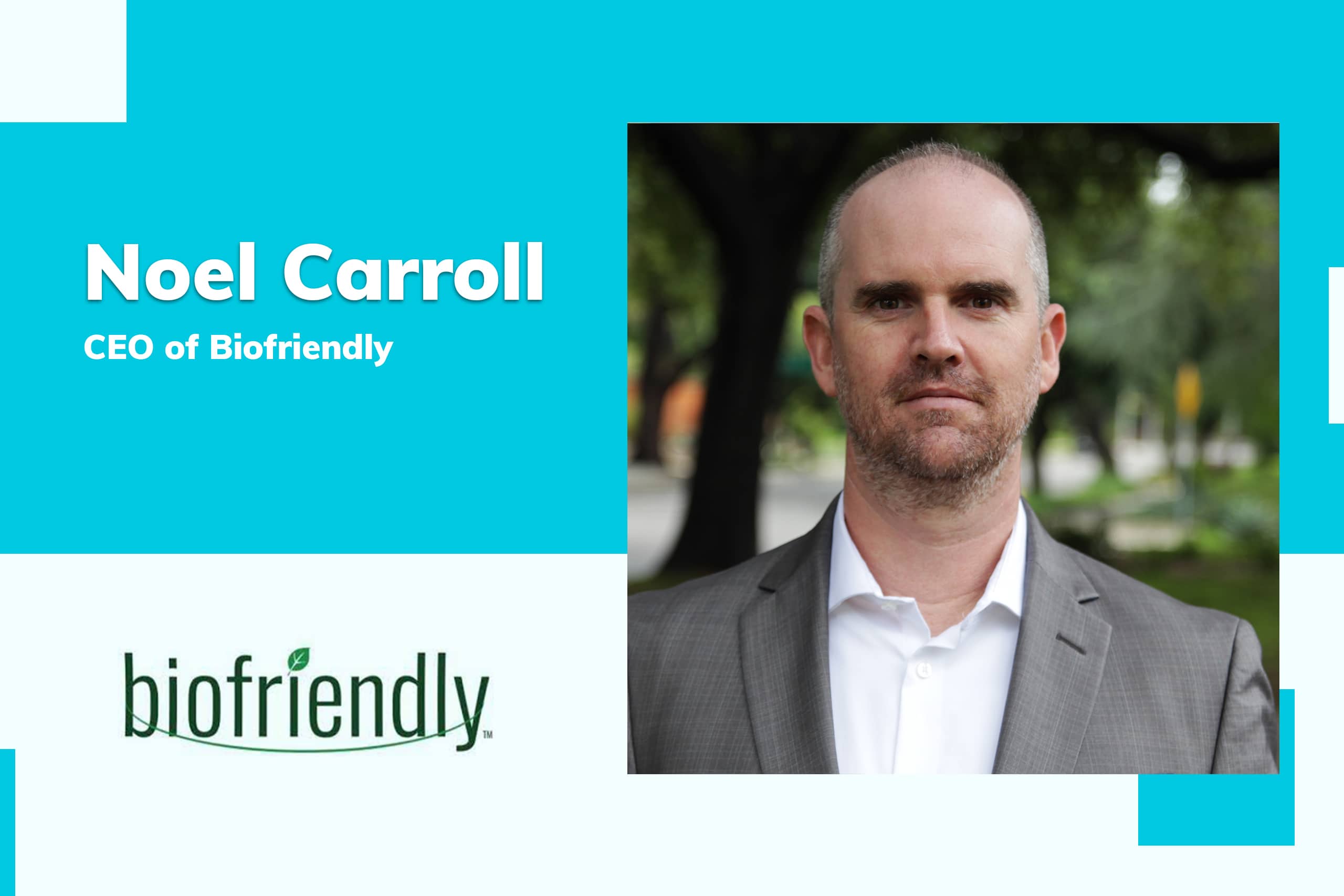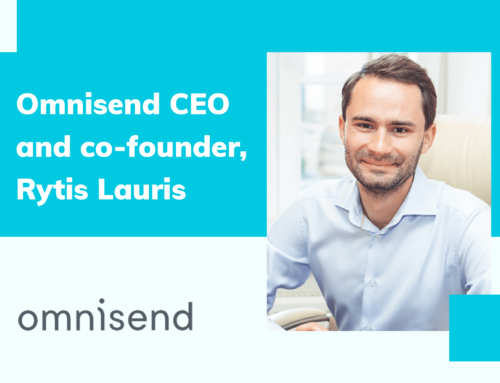What is Biofriendly and what does it do? How does it stand out in the market?
Biofriendly was founded by my family with the express purpose of solving the world’s air quality problems. To that end, we introduced the Green Plus® energy transition fuel additive to the market. Twenty years later, Green Plus has cleaned over 14.8 billion gallons of fuel and removed enough pollution to take the equivalent of a 270-mile lineup of cars off the road every year.
At Biofriendly, we’ve also created Biofriendly Planet, which is a website and network that’s based around giving environmental information.
The overall concept is that it gives you ideas that are actually very easy to implement into your own life and it doesn’t involve all the browbeating that I think sometimes can come in the environmental space. Sometimes it can be a frustrating space, because of all the inaction over the years. So, at Biofriendly Planet, we try to take out the emotions of that past inaction and approach people as if they have never really heard that there was a problem before, and get them to a place where they can be willing to tackle this problem with us. And that’s the whole reason that we created Biofriendly Planet; We wanted to be that opening intro with a few more laughs, a little more gentleness and more kindness so that you can feel ready to help us tackle this huge problem little by little.
Tell me more about Biofriendly’s flagship product, Green Plus
Green Plus is a patented catalytic technology that facilitates a slightly quicker combustion reaction in the engine. This more efficient reaction converts more heat into energy, which, in turn, leads to greater efficiency. This is a long and complicated way to say that Green Plus delivers more power, more torque, better fuel economy and fewer harmful emissions.
For example, if you were to add Green Plus to every single vehicle in a city fleet, you would have an immediate reduction of seven percent of carbon emissions from local police, fire and transit vehicles!
What are the key factors behind Biofriendly’s success? Could you tell us about the company’s journey from foundation to present day?
Biofriendly was an environmental startup in the late 90’s, so it took a lot of effort and help to get it moving. When the company was founded, environmentalism was more of a fringe topic for hippies and do-gooders, not the mainstream top-of-mind topic we see today. Nonetheless, my Uncle Bob was able to raise money from private investors to get it off the ground, and my brother, father and my other uncle worked with a team of scientists to develop their revolutionary product, Green Plus.
They were able to pass about four years of exhaustive testing with the State of Texas and the US EPA to become the premier Texas Low Emission Diesel Fuel additive, which really put the company on the map.
I switched careers and took over the company when Bob retired in 2018. Since then, we expanded the reach of Green Plus to include thousands of fueling stations in Latin America thanks to our United Nations Eco-Label as the world’s first energy transition fuel additive. We have also expanded our business to include environmental education with Biofriendly Planet, and we will be rolling out a whole new range of products to tackle some of the world’s biggest environmental problems over the next few years.
What has been the biggest challenge you have had to overcome since starting at Biofriendly?
It’s an interesting business, because to some degree, our biggest challenge is the status quo, and I think that’s a battle that a lot of environmentalists have. In a lot of ways, our competitors aren’t going to be somebody else doing the same thing as us. Our competition is that it’s a lot easier to keep doing the same thing even if it’s worse for the planet. At the end of the day for a lot of companies, it’s cheaper and easier to do nothing.
The problem is that a person does not want to fix something that they don’t perceive as broken, right? Companies are run by people, so they certainly follow that as well. I think our biggest challenge is educating the people who are using fuel, or certainly the companies that are selling the fuel to the point where they see the necessity of cleaning it and making it better.
What are you most proud of during your tenure at Biofriendly thus far?
We have a couple of success stories that I am very proud of, but I think the nicest one is from a bus company in Singapore.
There was a school bus company in Singapore, and they were using older buses that were pumping diesel fumes into the cabin of the bus, so kids were literally coughing and struggling to breathe as they dealt with this problem. They all hated it, but were also sort of used to it and figured it was one of those things you just had to live with.
Then, this bus company found our product online and contacted us. We connected with them, got in touch and chatted about their problems, what they were doing and how we could fix them. And so we actually sent them a whole big round of a Green Plus for all of their fleet free of charge to really give them a chance to try it out and see what it would do.
The great news is that the diesel exhaust went down so much that the kids noticed a huge difference. They weren’t coughing anymore and they told their parents, and the parents started celebrating and asking ‘hey what is this stuff?’. It was so great and a great feeling to literally be able to help children breathe on their school bus!
What green technology/innovations are you watching keenly right now?
Batteries. The path that the world seems to be taking (in terms of climate change solutions) is toward electric vehicles and renewable energy. None of this will work without incredibly energy dense batteries that last a REALLY long time and can be easily recycled. As it stands today, we won’t make it with the batteries we have. They are incredibly energy intensive to produce, they only last about 10 years, and they are still a horrible waste problem after expiration. To make matters worse, they don’t store enough energy to be practical as a storage center for solar and wind energy farms. While this sounds a little doomy and gloomy (which I hate) it’s not actually bad news. Advanced battery tech is still really new, and new advancements are being made every day. I think we can get there, but I am certainly watching the improvements with great interest.
What are three little things that we can do right now to help the planet?
Never use single-use plastic – While it’s true that single-use plastic is incredibly convenient, it’s also one of the leading causes of ocean pollution, and a growing source of soil pollution. Every minute, millions of plastic bottles, straws and bags are purchased worldwide, and they are having a devastating effect on our oceans and food supply.
Buy green products and thoughtfully get rid of the rest – there are so many great companies that have come out with more sustainable products than the ones most of us currently use. Purchasing from and supporting these companies not only makes your daily routines more green, but it also allows you to flex your purchasing power and show other companies that being environmentally friendly is a smart financial decision as well. On that note, once you’ve swapped out everyday items with more environmentally friendly items, you’ll want to get rid of the products that no longer serve your household. If you don’t want to use a particular product in your home, you shouldn’t want it ending up in the water supply or landfill, either. So, find out if and when your community hosts a recycling day for such solutions. At the same time, you can likely recycle other potentially toxic items, such as batteries.
Put your food scraps in the yard waste bin – Your yard waste is sent by your local waste management service to a composting yard where it eventually becomes super food for plants and agriculture, or biogas for transportation and heating. Your food waste is an energy rich material that can absolutely be composted. So don’t throw it away; put it in the yard bin!





Posted by
Marina S Hi! I'm Marina, project manager for Luminary Chiefs. Here to help, post and make sure everything looks great for you.